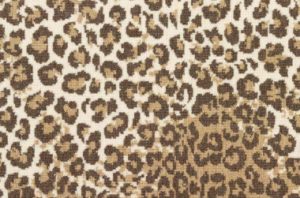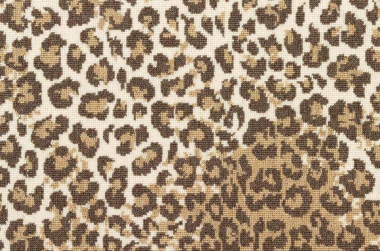Langhorne Carpet Company, a heritage Jacquard Wilton mill established in 1930 in Bucks County, Pennsylvania, has something in common with legendary New York Times fashion photographer Bill Cunningham. Both love leopard, and other cat-like, spots.
 For a recent Sunday Styles feature, Cunningham aimed his camera’s lens at New Yorkers in classic brown-tone leopard print coats — and then focused in on other style mavens who mixed up the pattern, wearing spots of black and gray, or adding pops of pink or aqua to the wild cat tradition. Online, the photog referred to leopard spots as “certainly one of the fashion world’s favorite patterns.”
For a recent Sunday Styles feature, Cunningham aimed his camera’s lens at New Yorkers in classic brown-tone leopard print coats — and then focused in on other style mavens who mixed up the pattern, wearing spots of black and gray, or adding pops of pink or aqua to the wild cat tradition. Online, the photog referred to leopard spots as “certainly one of the fashion world’s favorite patterns.”
Langhorne Carpet has been designing rugs with cat-like spots for years. The heritage Wilton mill offers broadloom lines of traditional leopard, in natural leopard browns. It, like those style-savvy New Yorkers, also offers gentle departures from the fashion tradition. “Safari” features wild feline spots in deep, watery blue tones. “Galaxy” offers up smaller spots in pale green, navy blue, pale blue, and natural, along with a higher-pile version in dramatic yet classic black and white. “Cosmos” reverse the pattern of Galaxy, in white on gray, pale green, pale blue, natural, navy blue or black.
“Leopard print pattern is ageless,” says Langhorne co-owner Bill Morrow. “And we designed Galaxy and Cosmos to be the same way, in order to fit in with all manner of décor.”
Bill Cunningham’s column, “Spotted” appeared in the Sunday, January 22 edition of the New York Times. Langhorne Carpet Company, is one of two Jacquard Wilton carpet mills remaining in the United States, serves residential, commercial and history preservation-institutional customers worldwide. The family-run business is owned and operated by two great-grandchildren of the mill’s founder, Winnifred and Bill Morrow.

